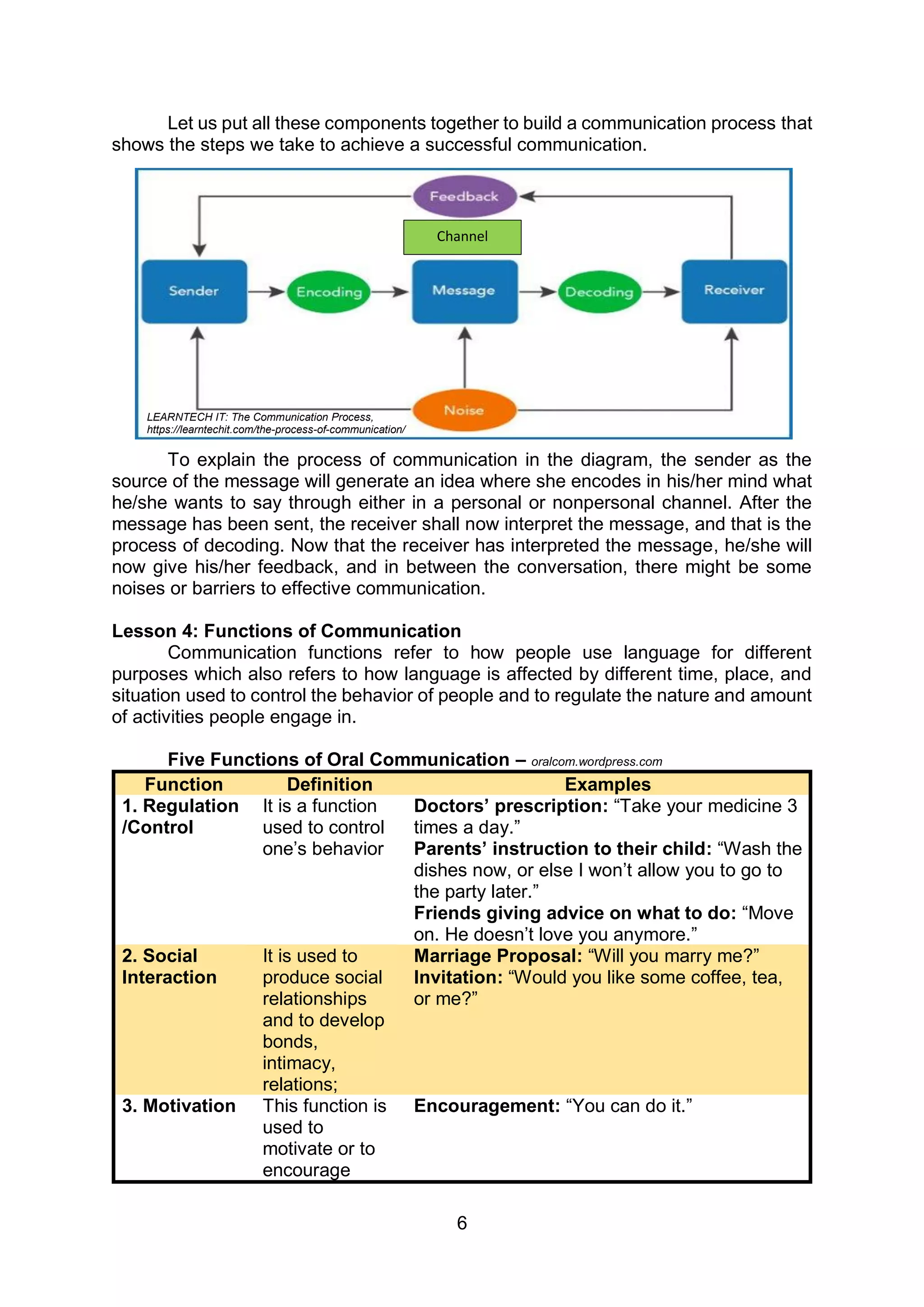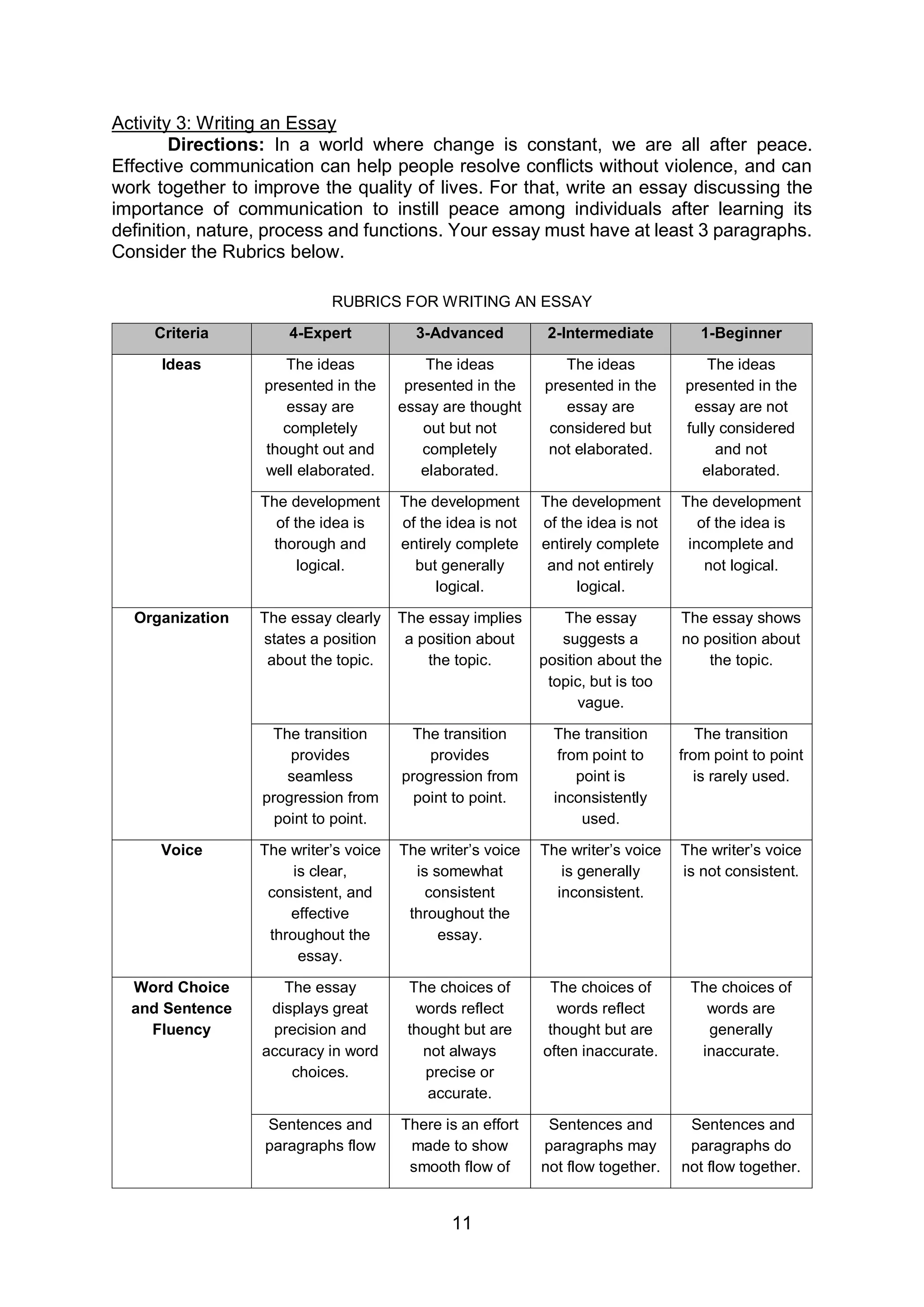The document provides a lesson on the nature, elements, process and functions of communication. It begins with learning competencies and objectives for understanding communication. It then discusses defining communication, explaining its nature as a process between two or more people using verbal and nonverbal means. It outlines the elements of communication including sender, message, encoding, channel, receiver, decoding, feedback and context. It explains the process of communication using a diagram. Finally, it discusses the functions of communication including regulation/control, social interaction, motivation, information and emotional expression.













